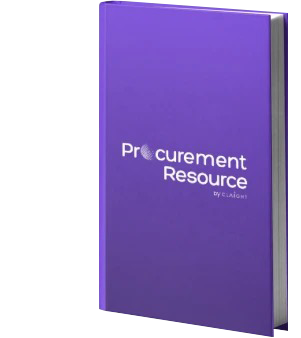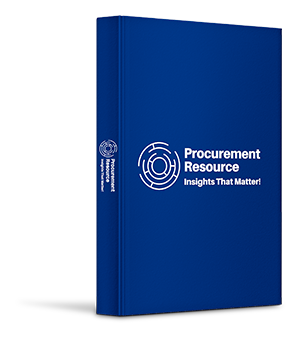Reports

Global Biotin Market: Country Overview; Recent Events; Value Chain Analysis; Production Process; Price Analysis; Indicator Analysis; Market Dynamics: Drivers & Constraints, Innovations & Trends, SWOT Analysis, Porter’s Five Forces; Industry Best Practices: Sourcing Strategy, Procurement Model, Key Factors Influencing the Quotation; Key Supplier Analysis, 2024-2032
Biotin Industry Report by Regional Category Spend, Price Analysis, Key Demand and Price Indicators, and Best Buying Practices
The global biotin market reached a value of about USD 2.0 billion in 2021. The industry is projected to grow at a CAGR of around 11.7% in the forecast period of 2022-2027 to reach a value of about USD 3.5 billion by 2027.
The global biotin industry report gives a comprehensive analysis of the industry, including key segments, trends, drivers, restraints, the competitive landscape, and other essential market aspects. Biotin is an essential vitamin mainly used for food fortification and has nutritional advantages. It is usually a beauty vitamin because of its beneficial effects on hair, skin, and nails. As a result, of the growing consumer desire for healthy hair, skin etc., the market is experiencing immense growth. In the industry report, the critical demand indicator is the highest category spender by region— Northeast Asia, North America, and Western Europe.
Industry Definition and Segmentation
Biotin, or vitamin B7, is a B vitamin engaged in a wide range of metabolic activities in both humans and other creatures, focusing on fat, carbohydrate, and amino acid use. It supports the health of the skin, hair, eyes, liver, and nervous system. It is a cofactor for carboxylase enzymes involved in fatty acid, isoleucine, valine synthesis, and gluconeogenesis. In addition, it is also a critical vitamin during pregnancy, as it is required for embryonic development. The biotin industry report comprises segments by product form (capsules, tablets, soft gels, liquid, powders), distribution channel (supermarkets/hypermarkets, speciality store, e-commerce), application (pharmacies, skincare, haircare) and region (North America, Europe, Asia Pacific, the Middle East, and Africa, and South America).
North America, Europe, Asia Pacific, the Middle East and Africa, and South America Regions are Driving the Procurement of Biotin
North America and Europe hold a significant share in the market due to a rise in health awareness. Regular intake of food or diet-pattern needs to grow in these regions continually. The Asia Pacific region is the fastest-growing market for biotin supplements, owing to an increase in consumer spending on health supplements due to the health advantages they bring. The rise in consumer awareness about the various benefits of biotin intake like improved skin, triggering protein/amino acid metabolism in hair roots and fingernail cells, and the production of fatty acids are primarily leading the market's growth. Furthermore, growing health consciousness among the general population has spurred such fixings as both nourishment and health supplement, resulting in higher sales in the sector. Moreover, the demand for natural components in the market is rising, owing to increasing consumer awareness of natural ingredients, thus, resulting in market growth. Other factors such as changes in lifestyle, hectic schedules, rise in disposable incomes, and increased expenditure on wellness products are furthering the market's potential.
On the other hand, Nutraceutical-based products lack a clear line of demarcation, with differences among nations. As a result, the market expansion is hampered by the complexity of regulatory, legal, and technological concerns.
Best Procurement Practices
The global biotin industry report by Procurement Resource gives an in-depth analysis of the best buying practices followed by major global biotin products utilising regions across the globe, such as engagement models, contract terms, and buyer and supplier negotiation levers, among others.
Category Management Studies
Plants generate biotin, which is required for plant growth and development. Bacteria may also produce biotin, and bacteria in the large intestine may grow biotin taken and used by the host organism. Alanine and pimeloyl-CoA are used as precursors in the synthesis process. 7-keto-8-aminopelargonic acid is the result of these reactions (KAPA). Plant peroxisomes carry KAPA to mitochondria, which is metabolised to 7,8-diaminopelargonic acid (DAPA). Dethiobiotin synthetase is an enzyme that catalyses the synthesis of the ureido ring using a DAPA carbamate triggered with ATP, resulting in dethiobiotin, which is subsequently transformed into biotin. Biotin synthase, a radical SAM enzyme, catalyses the last step. A unique ferredoxin, [2Fe-2S], provides sulphur.
Lifestyle Changes of Consumers, Further Driving the Market
Smoking and drinking are two everyday lifestyle habits that cause vitamin and mineral absorption and production problems. Growth in the number of working women worldwide has led to more significant concern for their health and the desire to stay healthy, resulting in a growing demand for biotin supplements. Biotin supplements also aid in the healthy growth of hair and nails, indicating a developing trend worldwide. The global biotin supplement market is growing as a result of this. Pregnant women and epileptic sufferers are frequently exposed to its deficit. Moreover, medical breakthroughs and food innovations are assessed to aid the growth of the biotin supplements market. The advent of e-commerce, on the other hand, boosted sales of nutricosmetics sold through online channels. The improving online presence of businesses to reach a wider audience further propels the industry.
The regional markets for the industry can be divided into North America, South America, Europe, the Middle East and Africa, and the Asia Pacific.
Key Industry Players Mentioned in the Biotin Industry Report
- Sports Research
- Nature's Bounty Co.
- Pure Research Products
- Zhou Nutrition
- Church & Dwight Co. Inc.
- Life Garden Naturals
Market Landscape
Established companies in the market, such as The Nature's Bounty and a few others, are releasing new goods that are also quite popular among vegans worldwide. For example, Nature's Bounty launched a cost-effective new product with no gluten, preservatives, or sugar and contained the same number of micrograms of biotin as more expensive ones. These types of products are in high demand, and they help diversify the market.
Key Initiatives by Companies
- In only a few weeks after initially issuing new regulations, India's food and safety standards organisation has modified its guidelines on recommended dietary allowances of vitamins and minerals once more.
1. Executive Summary
2. Biotin Market Snapshot
2.1. Biotin Market Outlook
2.2. Biotin Category Analysis, by Application
2.2.1. Pharmaceutical Industry
2.2.2. Food Industry
2.2.3. Others
2.3. Regional Overview
2.3.1. North America
2.3.2. Europe
2.3.3. Asia Pacific
2.3.4. Latin America
2.3.5. Middle East and Africa
3. Impact of Recent Events
4. Biotin Value Chain Analysis
5. Biotin Production Process
6. Trade Analysis
7. Major Risk Factors in Sourcing
8. Biotin Cost Structure
9. Biotin Price Analysis
10. Key Demand Indicator Analysis
11. Key Price Indicator Analysis
12. Biotin Market Dynamics
12.1. Drivers & Constraints
12.2. Industry Events
12.3. Innovations & Trends
12.4. SWOT Analysis
12.5. Porter’s Five Forces
12.5.1. Buyer Power
12.5.2. Supplier Power
12.5.3. Threat of New entrants
12.5.4. Threat of Substitutes
12.5.5. Industry Rivalry
13. Industry Best Practices
13.1. Sourcing Strategy
13.2. Procurement Model
13.3. Contract Structure
13.4. Negotiation Levers
13.5. Pricing Model
13.6. Key Factors Influencing the Quotation
14. Key Supplier Analysis
14.1. Koninklijke DSM N.V.
14.2. Zhejiang Medicine Co., Ltd.
14.3. BASF SE
14.4. F. Hoffmann-La Roche AG
14.5. Teijin Limited
The global biotin market size was valued at USD 267.3 million in 2021.
As per the applications provided, the haircare segment is anticipated to lead the market between the period 2022 – 2027.
The significant demand for natural ingredients in dietary supplements is one of the critical drivers of the biotin market growth.
Sports Research, Nature's Bounty Co., Pure Research Products, LLC, Zhou Nutrition, Natrol LLC, Church & Dwight Co. Inc., Life Garden Naturals, NOW Foods, Jarrow Formulas, Inc., Doctors Best, Zenwise Health, and SBR NUTRITION are some of the leading players in the market.
Northeast Asia, North America, and Western Europe regions are expanding the industry.
The global biotin market attained a value of USD 2.0 billion in 2021, driven by the rising prevalence of consumer knowledge of the multiple advantages of biotin consumption, such as better skin, stimulating protein/amino acid metabolism in hair roots and fingernail cells, and the creation of fatty acids is driving the market's growth. Furthermore, market demand for natural components is increasing due to increased consumer awareness of natural ingredients, leading to market expansion. Changes in lifestyle, hectic schedules, rising disposable incomes, and increased spending on wellness products contribute to the market's growth potential. Aided by the medical advances and food developments, the market is expected to witness further growth in the forecast period of 2022-2027, growing at a CAGR of 11.7%. The market is projected to reach USD 3.5 billion by 2027.
Procurement Resources’ detailed research approach explores deep into the industry, encompassing the macro and micro aspects of the industry. Its team of experts uses a combination of cutting-edge analytical tools and their expertise thus, delivering its customers with market insights that are accurate, actionable, and help them remain ahead of their competition.
Compare & Choose the Right Report Version for You
RIGHT PEOPLE
At Procurement Resource our analysts are selected after they are assessed thoroughly on having required qualities so that they can work effectively and productively and are able to execute projects based on the expectations shared by our clients. Our team is hence, technically exceptional, strategic, pragmatic, well experienced and competent.
RIGHT METHODOLOGY
We understand the cruciality of high-quality assessments that are important for our clients to take timely decisions and plan strategically. We have been continuously upgrading our tools and resources over the past years to become useful partners for our clientele. Our research methods are supported by most recent technology, our trusted and verified databases that are modified as per the needs help us serve our clients effectively every time and puts them ahead of their competitors.
RIGHT PRICE
Our team provides a detailed, high quality and deeply researched evaluations in competitive prices, that are unmatchable, and demonstrates our understanding of our client’s resource composition. These reports support our clientele make important procurement and supply chains choices that further helps them to place themselves ahead of their counterparts. We also offer attractive discounts or rebates on our forth coming reports.
RIGHT SUPPORT
Our vision is to enable our clients with superior quality market assessment and actionable evaluations to assist them with taking timely and right decisions. We are always ready to deliver our clients with maximum results by delivering them with customised suggestions to meet their exact needs within the specified timeline and help them understand the market dynamics in a better way.
Email Delivery Price: $ 899.00
The global nutmeg market reached a value of about 134 thousand tonnes in 2021. The industry is further expected to grow at a CAGR of about 4.5% in the forecast period of 2022-2027 to reach a value of around 167 thousand tonnes by 2027.
Read MoreEmail Delivery Price: $ 899.00
The global Artificial Intelligence Market reached a value of about USD 192 Billion in 2021. The industry is projected to grow at a CAGR of around 23% in the forecast period of 2022-2027 to reach a value of about USD 664.86 Billion by 2027.
Read MoreEmail Delivery Price: $ 899.00
The global HEOR market reached a value of about USD 1364.3 million in 2021. The industry is further expected to grow at a CAGR of about 12.81% in the forecast period of 2022-2027 to reach a value of around USD 2779.2 million by 2027.
Read More
